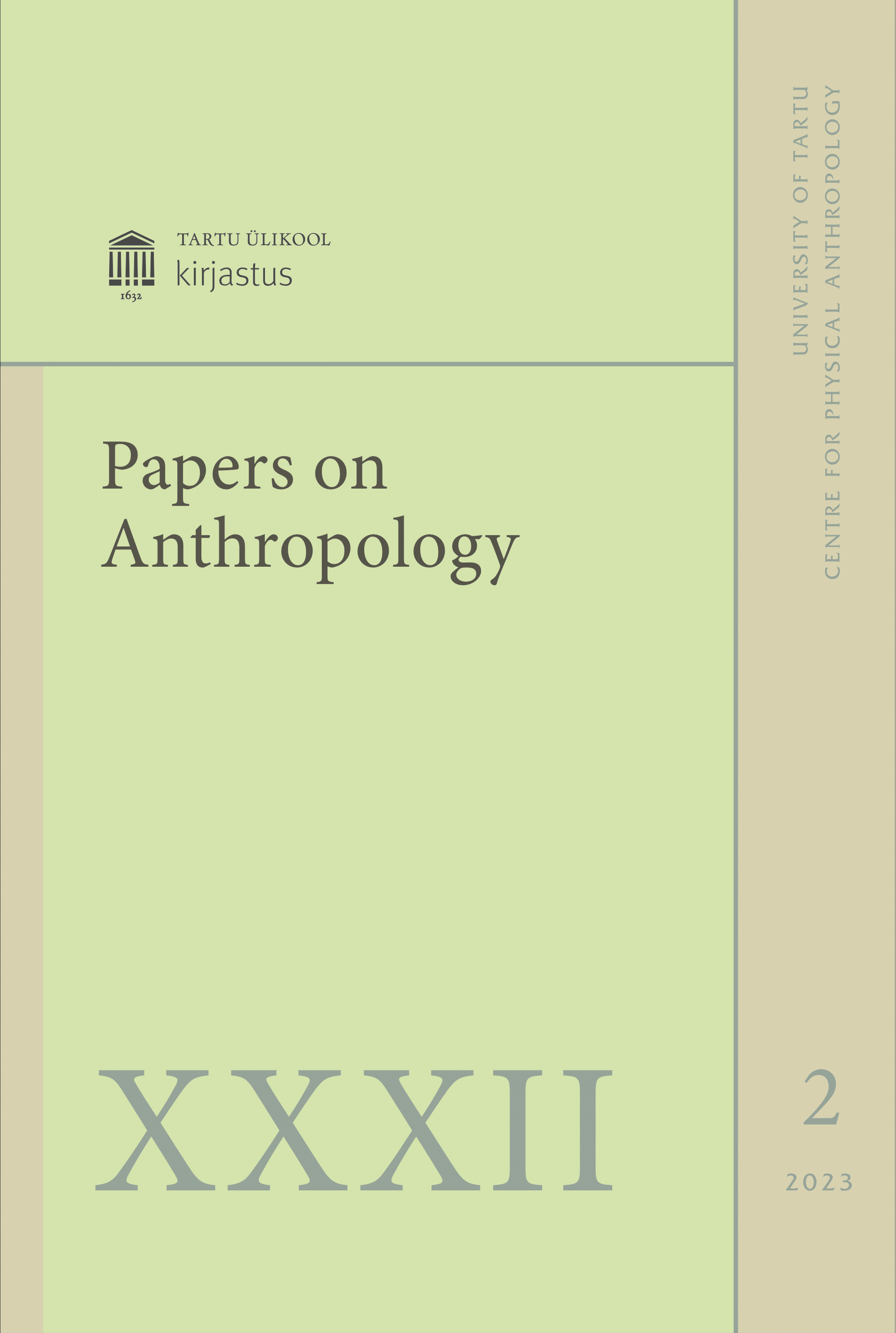Spatial complexity of the cerebral cortex pial surface: quantitative assessment by two-dimensional fractal analysis of MRI brain scans
DOI:
https://doi.org/10.12697/poa.2023.32.2.01Keywords:
fractal analysis, fractal dimension, cerebral hemispheres, cerebral cortex, magnetic resonance imagingAbstract
The objective of the current study was to evaluate the spatial complexity of the cerebral pial surface through two-dimensional fractal analysis of the external linear contour of cerebral hemispheres and to investigate the correlation between the parameters determined using Euclidean and fractal geometries.
Magnetic resonance brain images were obtained from 100 individuals (44 males and 56 females, aged 18–86 years). Five magnetic resonance images were selected from the MRI dataset of each brain, comprising four tomographic sections in the coronal plane and one section in the axial plane. Fractal dimension values of the linear contour of the pial surface of cerebral hemispheres were measured using the two-dimensional box counting method. Morphometric parameters based on Euclidean geometry were also determined (perimeter, area and their derivative values).
In this study, the obtained fractal dimension values were shown to be sensitive to the tortuosity of the linear contour of cerebral hemispheres, which depends on the number of gyri and sulci and the complexity of their shape. Therefore, the fractal dimension can be considered as an objective quantitative parameter characterizing the spatial complexity of the pial surface of cerebral hemispheres. The present study revealed that the Euclidean geometry-based morphometric parameters most strongly associated with the fractal dimension of the cerebral linear contour were the perimeter and the parameters calculated from perimeter values, including the perimeter-to-area ratio, shape factor, and two-dimensional gyrification index. Fractal dimension values did not exhibit strong correlations with age.
The data obtained in this study can be utilized for anatomical and anthropological studies. Furthermore, they hold practical applications in clinical contexts for diagnostic purposes, such as the diagnosis of congenital cerebral malformations and postnatal cerebral maldevelopment.

